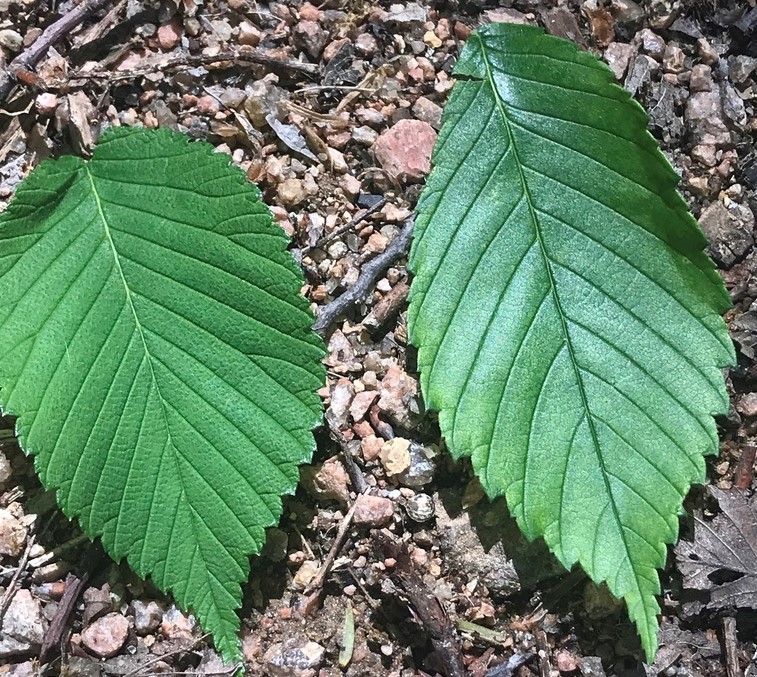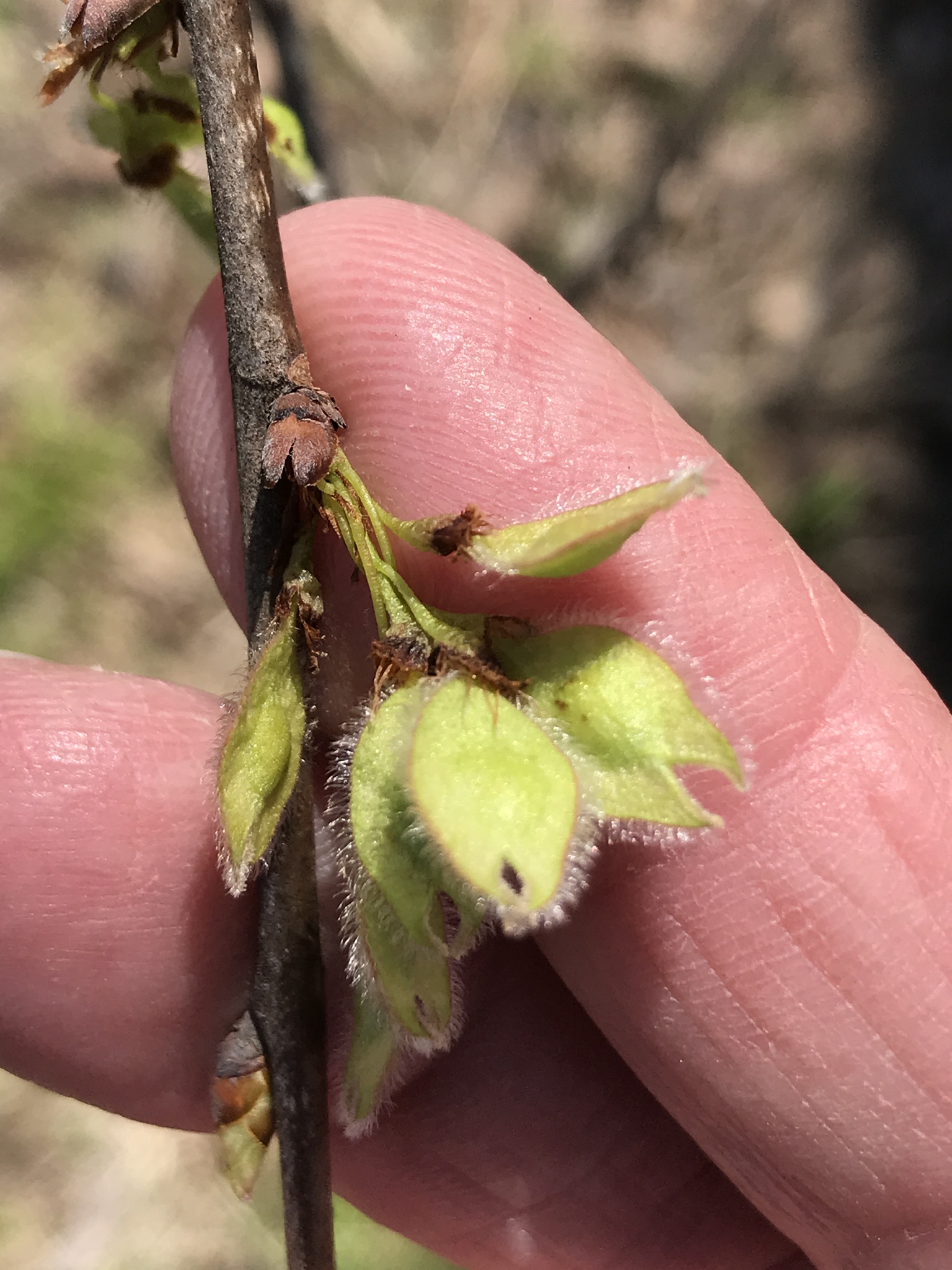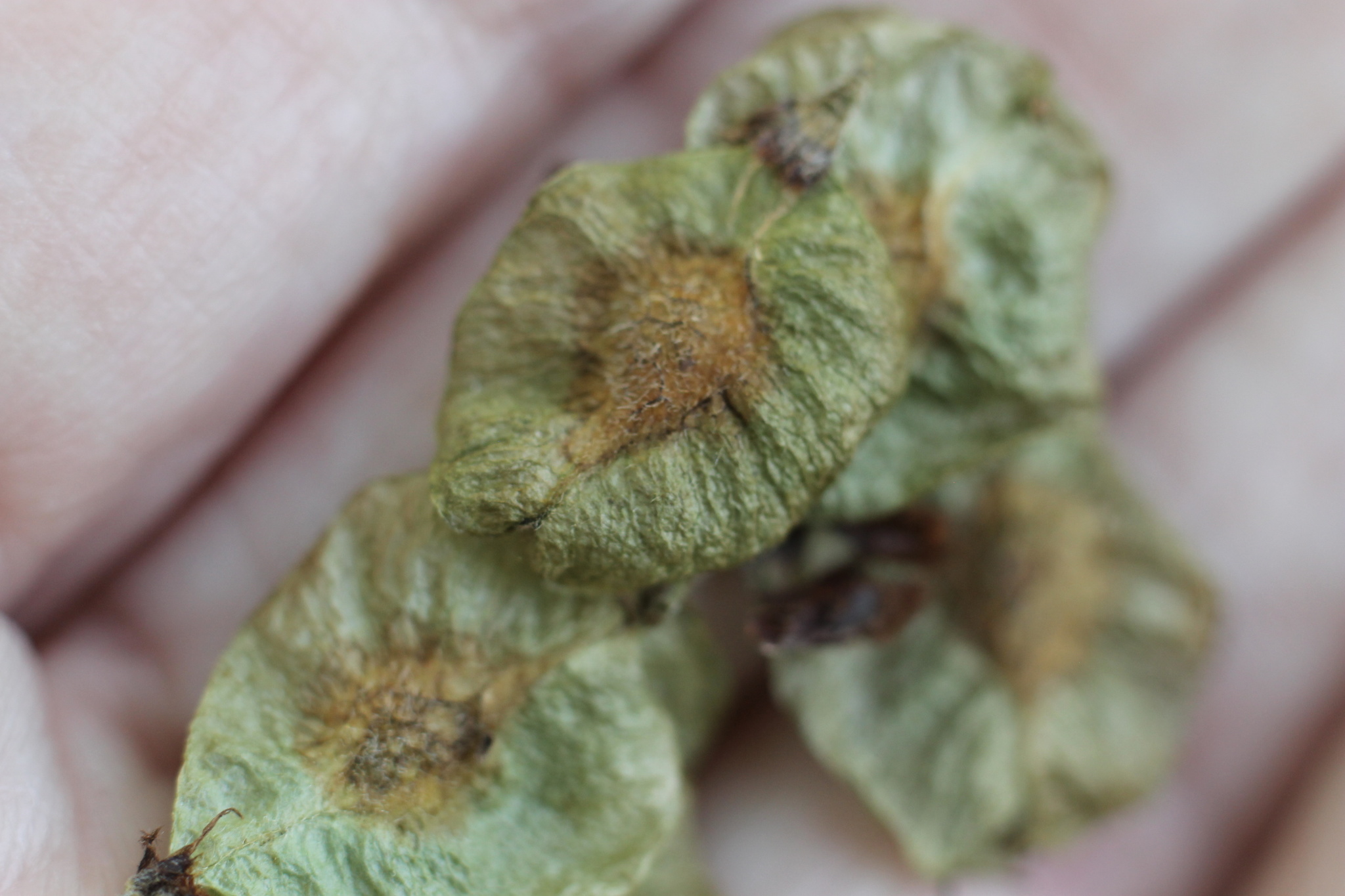The Elm Project, Part 2: American Elm and Slippery Elm (updated for 2020)
These are the two tree species that first led me down the ELM rabbit hole. Trying to identify AMERICAN ELM vs. SLIPPERY ELM drove me crazy my first summer as a Master Naturalist. They both have larger leaves than other elm species that grow here, but it isn't really possible to distinguish these two using leaf size. Slippery Elm is named for the slimy "slippery" feel of the inner bark. That's a fine clue, if you can get to the inner bark, but I usually couldn't. Most of the time, the main thing I was using to differentiate them was how rough or smooth the leaf surface was. Slippery Elm is supposed to feel rougher to the touch than American Elm, but this isn't always easy to determine. American Elm leaves are especially variable, with some leaves feeling much rougher than others, even on the same tree. I spent the first months of the summer rubbing hundreds of elm leaves without ever being entirely certain on species. I really never made much headway that first summer, but over the winter I hit the books and found that there are actually a number of clues that are simple and clear enough to make sense to me. And these clues do not involve rubbing the elm leaves at all. (¬‿¬)
| Here's my favorite: the leaves of Slippery Elm have secondary veins that are frequently forked: most leaves will have several forked veins on each side. In American Elm, the veins are rarely forked: most leaves will not have more than one or two per side. This often can be seen clearly in pictures, so is more helpful than texture! See pictures ---->> Slippery Elm on the left, American Elm on the right. |  |
 |
| More leaf pictures: Slippery Elm on the left; American Elm on the right |  |
|
Other hints: Slippery Elm leaves often taper abruptly to a very long tip, i.e. they are acuminate. |
 |
|
| The leaf shape of American Elm is oval in outline, widest at the middle, tapering to a sharp, pointed tip. |  |
|
| Slippery Elm twigs are sturdier than American Elm, with larger buds, chestnut brown and often covered in reddish fuzz. American Elm twigs are slender; buds are reddish-brown, with darker edged scales text. LEFT PICTURE: Sturdier Slippery Elm twig on the left, next to American Elm twig on the right. RIGHT PICTURE: American Elm twig and buds |  |
 |
| Most reliable way to identify these is with the fruit, a winged seed called a samara. Both American Elm and Slippery Elm flower and fruit in the spring, before leaves appear. In American Elm, both the flowers and the samaras hang in drooping clusters. The samara is elongated (longer than wide) and deeply notched. It is smooth and hairless on the front and back surfaces, but has fine hairs (cilia) all around the margin. |  |
 |
| The flowers and samaras of Slippery Elm are in dense bunches, close to the branches. Slippery Elm has samaras that are round (about as long as wide) and are not deeply notched. They are hairless around the margins, but typically have fuzz on the front and back surfaces, especially over the seed in the center. |  |
 |
BACK TO: A Collection of Helpful Identification Guides |
Observaciones
Fotos / Sonidos
Qué
Ulmus rubraAutor
lisa281Descripción
Finally! I’m pretty sure I found a flowering Slippery Elm (that I could reach!) Now if I can just find one that’s fruiting! This tree is very close to the outdoor classroom at the Heard, so it will be easy to get back to it.












Comentarios
Nice idea for a project. I'll just add that Ulmus americana and Ulmus rubra aren't particularly closely-related within the Ulmus genus and in that sense differ in many easy to learn ways. Despite this they are frequently confused in online posts and official articles, typically with Ulmus americana photos being labeled as "Ulmus rubra". Once one is familiar with both species, can contrast their differences to another species couplet: e.g. Ulmus rubra and the European Ulmus glabra which look fairly similar in terms of leaves and fruit
Thanks @owenclarkin for your comment - and for your many wonderful elm observations! I've found several of them very helpful!
Glad to hear it!
This is very helpful!
I am also going down the rabbit hole of elm I.D. Thank you for your good explanations! I think I can now tell the difference between Slippery and American. Now I just have to figure out which is which of the others that are similar. ; )
Very confusing! I'm still in the rabbit hole. One of your photos look like what is called Chinese Elm by others. Thought I had American Elm but leaves are consistently rough on the upper side. So now I think it's Slippery Elm. And then there's Hornbeam. . .
Añade un comentario